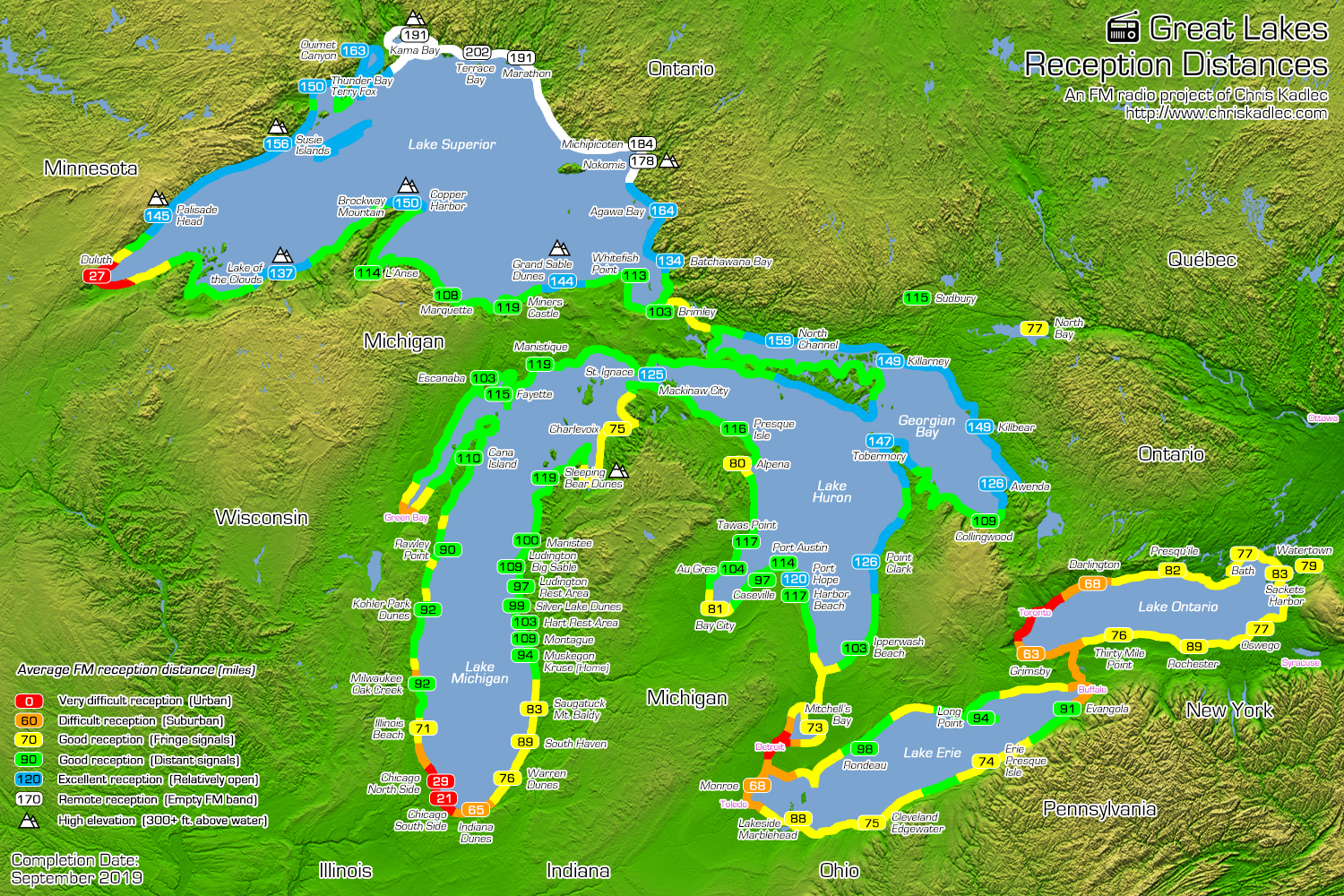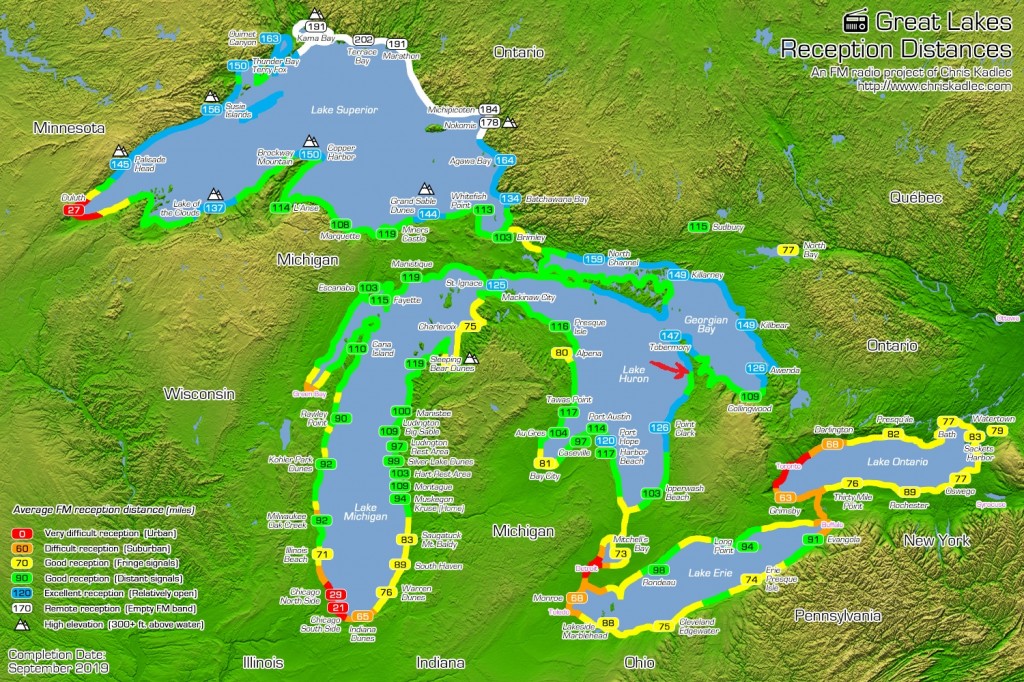To calculate this, I use simply averages that anyone would learn in math class. Add up all the distances of every signal received at a site and then divide by the total number of stations received at that site. Easy peasy. In fact, even when a handful of distant signals are subtracted or added to the list or conditions and stations are quite different from one day to the next for those sites I have multiple bandscans for, it usually affects the overall average very little. At my home site in Muskegon, I took numerous scans over time and despite differing conditions, the average was 94 miles for one scan, 95, or 98 for exceptional conditions, while at other sites in the Thumb, doing multiple scans only changed the average two or three miles (fairly negligible), so one could assume that the averages are quite accurate, surprisingly even.
I'll continue to make some new maps based on these many bandscans from the past few years, such as station maps showing the signal levels of all the big stations (Lite 96.3, The Fox FM on 92.5 - now off-air - WPHN, all those monster signals that get out hundreds of miles). I'll be sure to post some of them here as I finish them because I know some of you radio dorks would love to see how your favorite station gets out (or in the case of 92.5, got out, since it's gone now - and that one got out almost all the way to Duluth).

Click the above map to view the full-size version.
